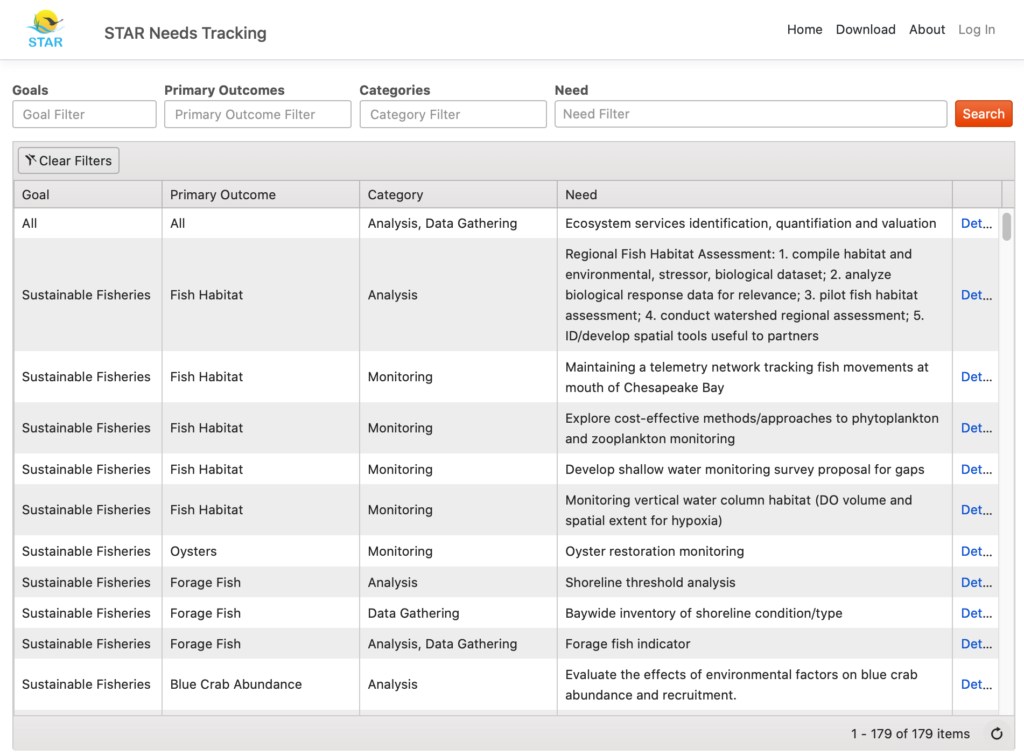(Photo by Will Parson/Chesapeake Bay Program)
Science Needs Database
The Chesapeake Bay Program (CBP) has developed a Strategic Science and Research Framework (SSRF) to consistently identify and assess both short- and long-term science needs of the partnership. These science needs are captured and tracked in a the Chesapeake Bay Program Science Needs Database, which is continually updated throughout the year. The database provides the most up-to-date list of science needs from across the partnership and additional information on each need such as detailed description, status, and engaged or potential resources identified to address the need. Science needs captured in this database are identified 1) by CBP Goal Implementation Teams (GITs) as necessary to make progress toward Chesapeake Bay Watershed Agreement goals and outcomes, 2) through the CBP’s adaptive management Strategy Review System (SRS), or 3) from CBP’s Scientific and Technical Advisory Committee (STAC) workshop report recommendations.
CBP uses this database to engage stakeholders, identify opportunities to better align or evolve resources, update activities and workgroups to address needs, and inform STAC of research priorities. This database can also be used by science providers to identify projects or collaborations of interest on which to engage CBP. Science providers can represent a wide range of entities including, but not limited to, academic institutions, federal and state agencies, local entities, non-profit organizations, and citizen science programs.
STAC Recommendations Database
STAC Recommendations Database
The Chesapeake Bay Program requested that STAC create a database of all recommendations resulting from STAC activities, including workshops, reviews and other efforts. In 2018, STAC Staff began the process of compiling recommendations and working with the CBP web development team to create a searchable database, with recommendations organized by categories and keywords. In late 2020, the database was made available for beta-testing. With a user-friendly interface and easily searchable format, this database will make STAC recommendations more accessible to the CBP, partners, academic institutions, and other research entities.

